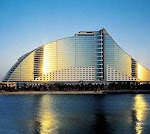There is also an interesting folklore museum, Vest-Agder Fylkesmuseum, in the northeastern part of the city.After doubling Norway’s southern tip, you will travel for a few hundred kilometers until you reach Bergen, Norway’s second city, the fjord capital on the gulf of Vagen, a few kilometers away from Sognefjord, Norway’s longest fjord (200 kilometers). This magnificent city will charm you with its medieval wooden houses,as bizarre and colourful as toyhouses: they are now shops and restaurants with their own special atmosphere. Most of them are to be found in the Bryggen area, on the east side of Vagen harbour, a World Heritage Site designated by UNESCO.In the same area the Bryggens Museum houses the world’s largest collection of rune stones with magic and eroticcarvings. The coast between Bergen and Trondheim runs across thousands of gulfs set between sheer rockfaces on which lie lovely wood-built towns and villages such as Molde: the so-called “city of roses” as it is known thanks to the vegetation that reaches from the city centre into the surrounding area.
Saturday, April 11, 2009
Fjording Around
From Oslo to Svalbard, a magic tour on the heels of the Vikings, in between huge glaciers and Swiss-style villages .One Norway,many Norways. There’s a land covered with conifers and birches, endless woods reaching far into the Northern wastes, and countless streams and waterfalls. And there’s the famous land of fjords, dramatic and spectacular, thanks to impressive clefts cutting in the coast like wounds,sheer rocks plunging straight into the sea,covered in green forests and moss. Fjords are a marvel of nature,and serve as a kind of brand logo for the country even though in fact they are only to be found in the southwestern region,between Stavanger and Ålesund.The word fjord, however, is used to describe the whole of Norway’s coast, which is just as majestic and marked by gulfs and bights which are just as impressive. The best way to discover the magic of the fjords is by sea, starting from the capital, Oslo, which is itself on a 100-km long fjord (Oslofjord) and has many attractions: set between sea and green hills, it stretches into parks and gardens through which appear, now and then, low-rise buildings. After a tour of the main attractions such as Karl Johans Gate, a long, tree-lined avenue running through the city centre with impressive buildings, fashionable shops and ever-crowded restaurants, you get back ashore for Kristiansand, a nice town showing on its central square, Torget, rows of ancient wood and stone-built houses.
Subscribe to:
Post Comments (Atom)














No comments:
Post a Comment